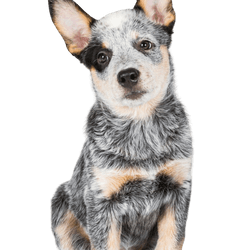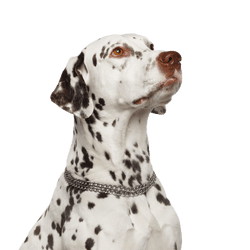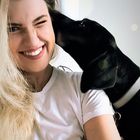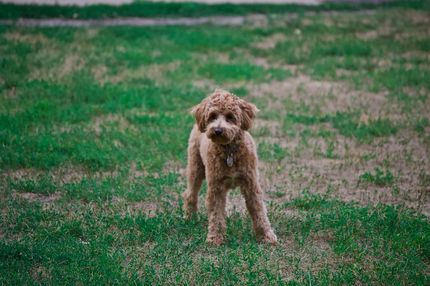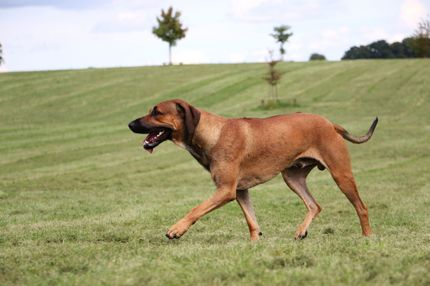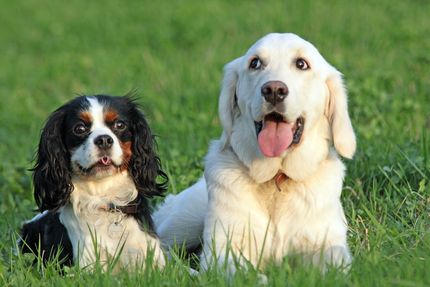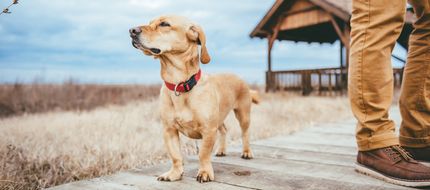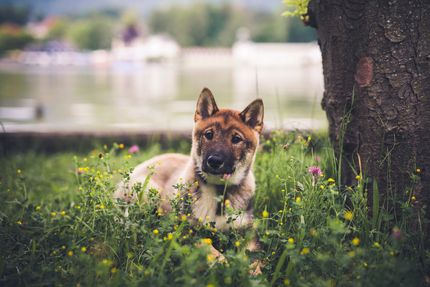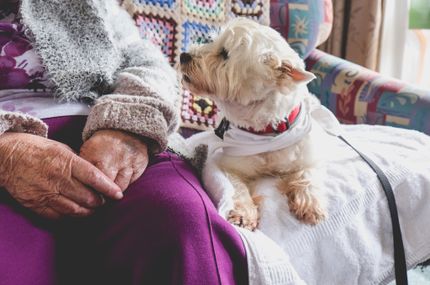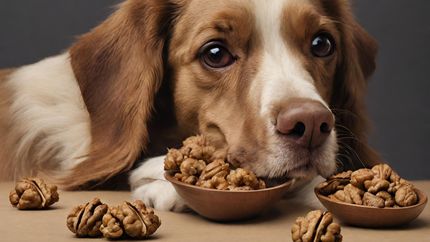Facts & Origin
Dalmatian Heeler ( Australian Cattle Dog and Dalmatian mix )
The Dalmatian Heeler is a fascinating hybrid breed created by crossing the Australian Cattle Dog, also known as the Heeler, and the Dalmatian. Both parents have a rich history and contribute to the unique characteristics of this mix.
The Australian Cattle Dog: Originally bred in Australia, the Heeler was used for herding cattle in pastures. He is known for his working ability, intelligence and stamina.
The Dalmatian: The history of the Dalmatian goes back centuries and is associated with horse-drawn carriages and fire engines. The Dalmatian is known for its striking spotted coat and friendly nature.
His unique personality, energy and love of work make him a great companion for active families and experienced dog owners. With sufficient exercise, mental challenge and loving training, the Dalmatian Heeler can grow up to be a loyal and loving companion who enriches the lives of his family. His striking spotted coat and friendly nature will take the hearts of many dog lovers by storm. If you're looking for an active and intelligent dog, the Dalmatian Heeler could be the perfect choice for you.
| Alternate Name | - |
| Origin | Australia - Croatia |
| Life expectancy | 10 - 13 years |
| Care requirements | low-maintenance |
| Activity level | average - average to high |
| FCI group | not recognised |
| AKC group | not recognised |
| KC group | not recognised |
More Australian Cattle Dog mixes
More Dalmatian mixes
Attitude, character and temperament of the breed
Possible character traits
The Dalmatian Heeler combines the best traits of both parents to develop a unique character.
Intelligent and Capable of Learning: The Dalmatian Heeler inherits the high intelligence and learning ability of the Australian Cattle Dog. He is quick in conception and can easily learn complex commands.
Energetic and Enduring: The Dalmatian Heeler has a great deal of energy and endurance, which he must expend through regular exercise and mental challenges.
Eager to work and herding instincts: Thanks to his Australian Cattle Dog ancestry, the Dalmatian Heeler can have a strong herding instinct. He often shows a strong desire to work and wants to be kept busy.
Sociable and Family Friendly: The Dalmatian Heeler is usually a friendly and sociable dog that gets along well with children and other pets.
Suitability and attitude
The Dalmatian Heeler is a versatile dog that does well in a variety of households: He is a good fit for active families who enjoy spending time outdoors and can provide the dog with plenty of exercise and mental stimulation .
Because of its intelligence and willingness to work, the Dalmatian Heeler is better suited to experienced dog owners who understand its needs and can train it consistently.
Character
Usage
Care and health
The care of the Dalmatian Heeler requires special attention to ensure its well-being.The Dalmatian Heeler needs plenty of exercise and mental challenge to be happy and balanced. Long walks, active play and obedience training are important.
The Dalmatian Heeler's short, shiny coat requires little grooming. Regular brushing and occasional bathing are usually sufficient.
As with all dog breeds, the Dalmatian Heeler may be subject to certain genetic health problems. These include hip dysplasia and hearing problems, which are more common in the Dalmatian. Regular vet visits and a balanced diet are important to maintain his health.
What does this mixed breed look like?
The Dalmatian Heeler can have physical characteristics of both parents:
Size: it is usually a medium-sized dog with a shoulder height of 45 to 55 cm.
Weight: The weight usually varies between 15 and 25 kg.
Coat and color: The Dalmatian Heeler has short and shiny coat with the characteristic Dalmatian spots. The spots may vary in size and distribution.
Build: The Dalmatian Heeler has an athletic and muscular build, similar to the Australian Cattle Dog.
| Fur length | short |
| Fur | - flat coated |
| Ear shape | Standing Ears - Triangle |
| Tail | fanned out - lang |
| Anatomy | rugged, sporty |
| Size ♀ | 43 - 58 cm |
| Weight ♀ | 14 - 24 kg |
| Size ♂ | 46 - 61 cm |
| Weight ♂ | 15 - 24 kg |
| Suitable For | - |
Known Diseases
Numbness
Often occurs in old age.
Nervous disorders
Nervous disorders are manifested, for example, by disturbances in perception, neurological abnormalities such as tremors, apathy, convulsions, paralysis, tilting of the head, uncontrolled urination and defecation, and behavioural abnormalities.
Eye infections
Chronic eye infections can be very painful in dogs and can be treated with medication. In rare cases, the cornea must be treated.
Allergies
Can occur in a number of breeds, regardless of genetic makeup.
FAQ
-
Yes, it will combine typical characteristics of the two breeds, such as intelligence, adaptability, energy and a built-in vigilance.
-
Since the genetic makeup of each mixed breed puppy can be different, the appearance is highly variable and can resemble either parent or produce completely new characteristics.
-
Yes, these strong and intelligent mixed breed dogs require consistent training and enough exercise. They also need to be groomed regularly.
-
Yes, under good conditions these mixed breeds can be faithful and loving companions in a family. However, it must be noted that dealing with them must be done consistently and with respect.
-
Life expectancy is usually 12-15 years.
